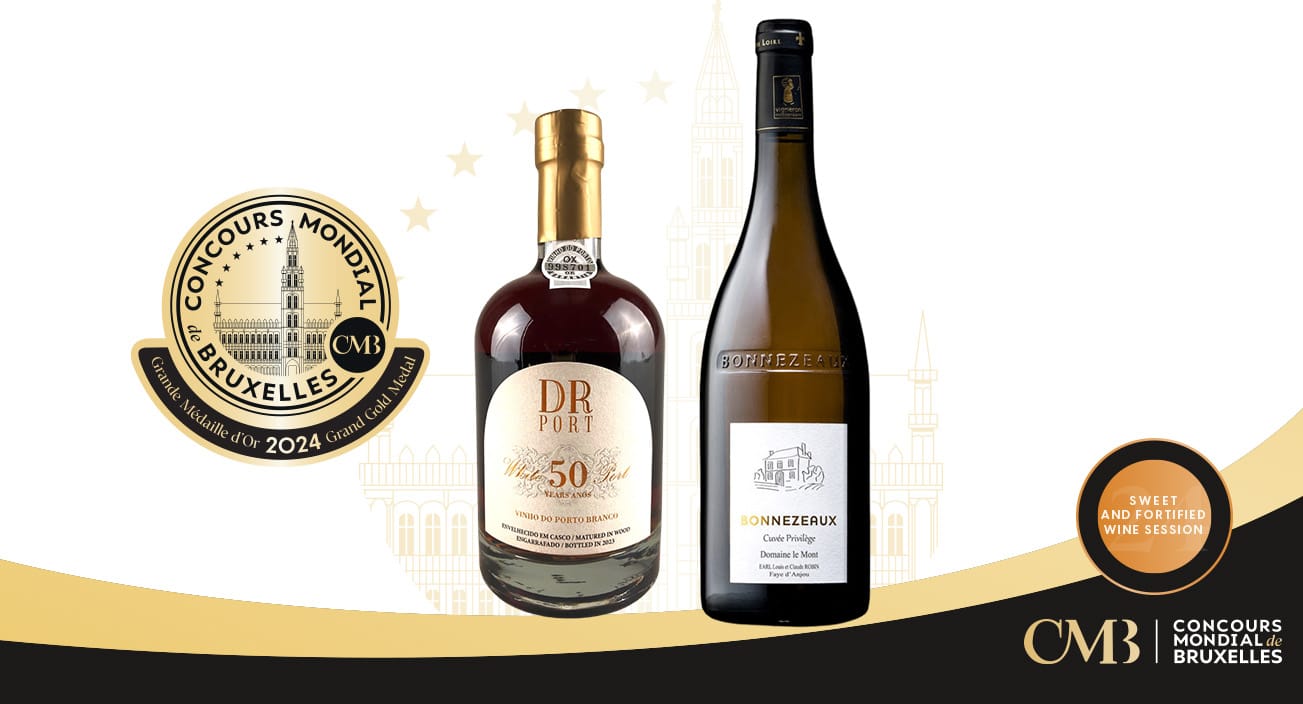California rosé wines bring a sense of exploration

The United States is one of the world’s leading countries for rosé wine consumption but it might come as a surprise tosome that it is also the third largest rosé producer in the world. Over the past decade, sales of California rosé have soared to unprecedented heights and the trend is expected to continue. With consumer preferences shifting away from the previously popular off-dry white Zinfandels towards drier and fresher styles, a wide range of quality driven rosé wines is produced in California today.
To learn more about the growing popularity of rosé wines in the United States, the most recent consumer trends and the future of the category, we turned to Honore Comfort, Vice President of International Marketing at the California Wine Institute. We talked about the variety of California rosés and how they compare to their European competitors.
The US is the third largest rosé wine producer in the world, tell us how the category has developed in recent years.
California is the fourth largest wine producing region in the world, behind France, Italy and Spain and represents more than 95% of all US wines that are exported around the world.
Rosé has been a rapidly growing category in the United States and in California specifically. During the past decade, dry rosé has exploded in popularity in the United States, as well as in export markets such as the U.K. and Canada. We have also seen a real expansion of the segment in terms of style – our rosés today are produced in a variety of styles and from a range of different varieties. What California rosé brings to the whole rosé category is really a sense of exploration.
Rosé has also given our wineries a chance to really expand their production by bringing something new to the marketplace. Because fruit for rosé is usually picked early in the harvest season, and the wines are usually not aged, it’s a way for wineries to have a finished product, while waiting for other vineyards to ripen.
Are there any typical varieties used in Californian rosé wines?
California has a long history of producing rosé or blush wines from Zinfandel and that established the category at the time. Those wines were described as White Zinfandel although they were really rosé wines. That is still an important part of the category but it has really shifted to a newer style of rosé which is drier, fresher and heavily Pinot Noir-driven. However, it has really expanded because of the freedom that we have in California in terms of wine making. Unlike other parts of the world, we don’t have restrictions around which varieties can be blended together or grown in certain regions. In that sense it is a very exciting category as it offers our winemakers a great creative opportunity to work with different grapes and blends and there’s so much experimentation happening. In addition, California benefits from a wide diversity of growing regions and a broad range of varieties that can be used to make rosé. Very traditional ones would be Pinot Noir, Grenache and Mourvedre, but we are even seeing rosés with Cabernet Sauvignon or Petit Verdot. Rosés in California are remarkably diverse! What our winemakers are pursuing is more of a style in terms of mouthfeel, freshness, color, balance and wine character.
Which are considered the best regions for rosé wines in California?
Well, I would say Sonoma County and Mendocino County in particular have led in our smaller productions because there is a significant amount of Pinot Noir planted there and the cool climate is very well suited for the production of rosé. Santa Barbara County and the Central Coast in general are also great regions. Within the Central Coast, in Paso Robles and San Luis Obispo, is where I’ve seen a higher amount of our Rhone varieties and that’s where we find rosés from Syrah, Grenache and Mourvedre. We also have California designated rosé where winemakers and wineries can source and blend grapes from different regions. Some cooler climate fruit from the North Coast or Central Coast combined with some warmer climate fruit from Lodi in particular is a great example.
Which are the main markets for Californian rosé wines?
Because they are available relatively early in the year and are meant to be drunk right away, our rosé wines are mainly consumed here in California and don’t even make it to other parts of the world. Furthermore, the US is the largest wine consuming market in the world and so many of California’s wineries are able to sell most if not all of their production within the country. That’s one of the reasons why even though California is the fourth largest wine producing region in the world, it is actually 11th in terms of export sales volume. So while other wine regions are working to sell their wines here in the US, we’re working to sell our wines in other countries around the globe. I’m excited about the growth of our rosé exports because we of course want to share our wine with everybody.
Which countries are you mainly exporting to?
Canada is the number one export market for California wines. It represents 35% of all US wine exports. And within Canada, Ontario is the largest market followed by Quebec. The UK is our second largest export market and then third is Continental Europe. Mexico has also been a good export market particularly for rosé, as there is an affinity in terms of cuisine and wine styles. That has led to a tremendous growth in US wine exports to Mexico.
The US is among the leading countries for rosé consumption, second only to France. What is pushing this high demand?
Since the US is the number one wine consuming market in the world it shouldn’t be surprising that we are one of the leaders in terms of rosé consumption. Another reason for that is the global shift in consumer wine preferences really leaning into fresher, lighter, brighter wine styles and rosé fits that bill. Moreover, since Covid happened we have seen a real developing trend of consumers around the world looking to enjoy wine out of doors, at picnics outside with their friends, at the beach, and again rosé is a perfect fit with that – it’s fun, it’s fresh, it’s celebratory. We’re also seeing a number of roses, including high-end wines of great quality, in alternative packaging concepts, which is very exciting and definitely part of the future.
The US is also one of the world’s main importers of rosé wines. How do Californian rosés hold up against those from France, Spain and Italy?
I would say in terms of quality they are absolutely on par. In California you will find rosés from different varieties and different blends that are not available in other parts of the world and that’s what makes them interesting. There’s also a range of price points in rosé wines produced in California. You can certainly find some very wallet-friendly options because as rosés are usually not aged, wineries are able to make them and get them to market quickly and at a more accessible price. At the same time you can also find rosés that are very much at the higher end of the price scale. The latter are usually from a very small production, a single vineyard or really unusual designations. Among those higher-end rosé wines there are stainless steel, cement or barrel-fermented ones.

When we look at retail in the States, nearly 90% of the rosés sold over 20$ come from France. And in the lower price segments, the vast majority of rosés on shelves are produced in the US. Why are French rosés so much more expensive than Californian ones?
There’s a higher volume of higher priced rosés from France in this market. The reason for that is that the higher-price rosés represent a very small production in California. The bulk of the portfolio of most Californian wineries is red and white and rosé is made in very small volumes. It’s also common for wineries to make rosé wines as a special, which they only offer through the cellar door or to their wine club members, so that some rosés don’t even make it into the data points because they’re not sold at retail or in restaurants.
One of the things that you don’t see as much of here in the US and you do in other countries, are wineries who are primarily focused on rosé wine production. That’s very unusual here, partially because rosé has been more recent in terms of growth. Another part of that is economics – as a result of the high cost of the land and farming, wineries need to sell their wines at higher value prices. So they often choose to put their high quality fruit into wines that they can age and sell at a higher price
What are the strongest selling points of Californian rosés?
The beauty of rosé from California is that it is very difficult to be labeled as just one style. In comparison to rosé wines from other parts of the world where the production is so much higher and there is a very singular and well-defined style, Californian rosé is very diverse. Rosé in California is a category for experimentation and expression of fruits, sites and soil.
What would you say are the most popular consumer styles right now?
What consumers are really looking for today are pale, fresh, bright rosé wines with nice acidity but also leading with red fruit character. Customers who previously drank off-dry White Zinfandel are now shifting their preferences towards the newer modern rosé style.
The fresh Californian rosés are also very food-friendly and pair well with our cuisine in terms of great produce, and seafood.
What can we expect from the 2022 vintage ?
Both 2021 and 2022 were excellent vintages and the character of the fruit overall was very high so I am expecting excellent rosés from the 2022 vintage which will be released later this spring.
How do you see the future for Californian rosés over the next 5-10 years?
I see them continuing to grow and expand as a category both domestically and also internationally. I see this as a key segment of our wine production and our overall wine portfolio. Newer and younger wine consumers in particular will easily enjoy our rosé wines because they are accessible, they can be affordably priced and they’re delicious. Watching the global industry trends and how consumers are increasingly open to rosés, I expect that more and more California wineries will be producing rosé wines and will be able to increase their export volumes and their export sales. I anticipate seeing more and more Californian rosé wines available in markets around the world.
—————————————————

Honore Comfort is the Vice President of International Marketing for the California Wine Institute. She has worked in the wine industry for over 20 years both with California-based and international brands and wineries. She ran Sonoma County vintners for 10 years and was the president of Black Mountain Wine Company before stepping into her role with the Wine Institute.
Wine Institute is the public policy association of 1,000 California wineries and affiliated businesses. Since 1985, Wine Institute has served as the administrator of the Market Access Program, an export promotion program managed by the USDA’s Foreign Agricultural Service in which 170 California wineries currently participate. U.S. wine exports, more than 90 percent from California, are supported by 13 global representative offices that conduct marketing programs, a consumer website www.discovercaliforniawines.com in nine languages, social media campaigns in 18 countries, and educational tools and videos.
Valentina Phillips


